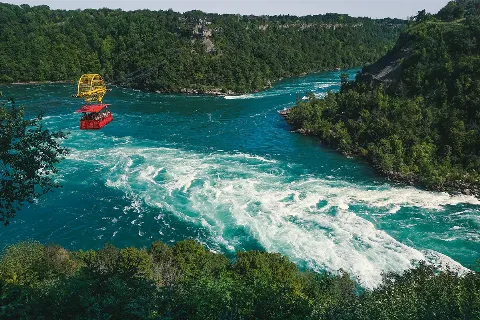
Niagara Falls, a name synonymous with natural splendor, is on everyone's list of the world's most stunning wonders. This group of waterfalls, straddling the border between Canada and the United States, inspires awe in all who see it. But beyond their sheer beauty, Niagara Falls hold a wealth of intriguing aspects. Let's delve into ten fascinating facts about these iconic falls.
Three Unique Falls: Niagara Falls comprises three separate waterfalls - the American Falls and Bridal Veil Falls on the U.S. side, and the Horseshoe Falls (also known as Canadian Falls) in Canada. Among these, the Horseshoe Falls are the largest and most visually striking.
Origins from the Ice Age: The origins of Niagara Falls trace back about 12,000 years to the end of the Ice Age. Melting glaciers allowed water from the newly formed Great Lakes to carve through the Niagara Escarpment, leading to the falls' creation.
A Torrent of Water: Niagara Falls sees over 3,000 tons of water cascade over its edge every second. This immense flow could fill 50 Olympic-sized swimming pools in just 60 seconds.
Power Source: Since the late 1800s, Niagara Falls has been harnessed for hydroelectric power. It generates around 2.4 million kilowatts of energy, playing a vital role in the regional economy.
Daredevil Feats: The falls have witnessed numerous tightrope walks. Jean Francois Gravelet, known as "The Great Blondin," was the first to accomplish this in 1859. Most recently, Nik Wallenda crossed Niagara Falls on a tightrope in 2012, televised globally.
Honeymoon Haven: Known as the "Honeymoon Capital of the World," this tradition began in 1804 when Theodosia Burr, the daughter of Aaron Burr, visited the falls for her honeymoon.
The Name "Niagara": The word "Niagara" originates from the Iroquoian "Onguiaahra," meaning "The Strait." The area was inhabited by Native American tribes long before European explorers arrived.
Winter Transformations: Although Niagara Falls never completely freezes, they often appear frozen during harsh winters, forming an ice bridge across the Niagara River. However, walking on this ice bridge is now forbidden for safety reasons.
Nighttime Illumination: Since 1925, Niagara Falls has been lit up nightly with colored lights, creating a breathtaking rainbow display against the falls. This event draws spectators from all over the world.
Conservation Efforts: In 1885, Niagara Falls State Park in New York was established as America's first state park, initiating efforts to preserve the falls' natural beauty. These efforts continue today, balancing commercial use and conservation.
Niagara Falls is more than a stunning natural wonder; it represents a complex blend of natural grandeur and human history, making it a unique and compelling attraction. While these ten facts offer a glimpse into its essence, experiencing Niagara Falls in person reveals even more of its enigmatic beauty.




